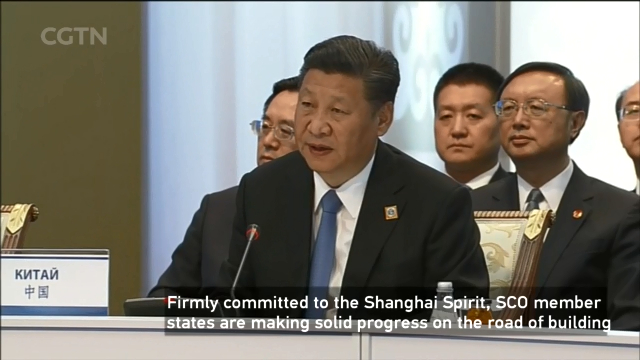
13:03, 09-Jun-2018
President Xi's SCO Footprint: Major contributions by Chinese president at SCO
02:40

Chinese President Xi Jinping has attended every single SCO summit since he took office in 2013. Today, we follow his footprint and look at major policies and contributions made by President Xi at previous SCO summits. Natasha Hussain outlines the details.
2013, the Kyrgyzstan capital of Bishkek, a caravan stop of the ancient Silk Road. This was the year the city hosted the 13th SCO summit.
History was witnessed here when Chinese President Xi Jinping proposed an idea that has since influenced more than 60 percent of the world's population.
XI JINPING CHINESE PRESIDENT "To forge closer economic ties, deepen cooperation and expand development space in the Eurasian region, we should take an innovative approach and jointly build an 'economic belt along the Silk Road'."
Last year, trade volume between China and countries along the Belt and Road route reached more than a trillion US dollars, an 18 percent year-on-year increase.
The initiative is expected to generate a collective GDP of 2.1 trillion dollars -- that's equal to almost one-third of the world's economic output.
Fast forward to 2015, in the Russian city of Ufa, President Xi proposed building a community of shared future in the region. The proposal came at a time when the region was suffering from waves of extremism and an economic downturn.
President Xi also drew up a blueprint at the summit. It set goals for SCO members to strengthen cooperation in areas including politics, security and trade.
And at last year's SCO summit in the Kazakhstan capital Astana, the organization witnessed its first-ever expansion.
XI JINPING CHINESE PRESIDENT "Firmly committed to the Shanghai Spirit, SCO member states are making solid progress on the road of building a community of shared future, thus establishing a fine example of the new type of international relations featuring win-win cooperation. In this context, today we are going to admit India and Pakistan as new member states of the SCO."
With New Delhi and Islamabad officially in, the eight-member bloc accounts for more than 3 billion people, or around 42 percent of the world's population.
The regional cooperation organization also covers the largest area of the world's territory.
In addition, it expands member states' economic cooperation from Central Asia to South Asia. This means the Belt and Road economic belt will embrace more opportunities and guarantees. Natasha Hussain, CGTN.

SITEMAP
Copyright © 2018 CGTN. Beijing ICP prepared NO.16065310-3
Copyright © 2018 CGTN. Beijing ICP prepared NO.16065310-3